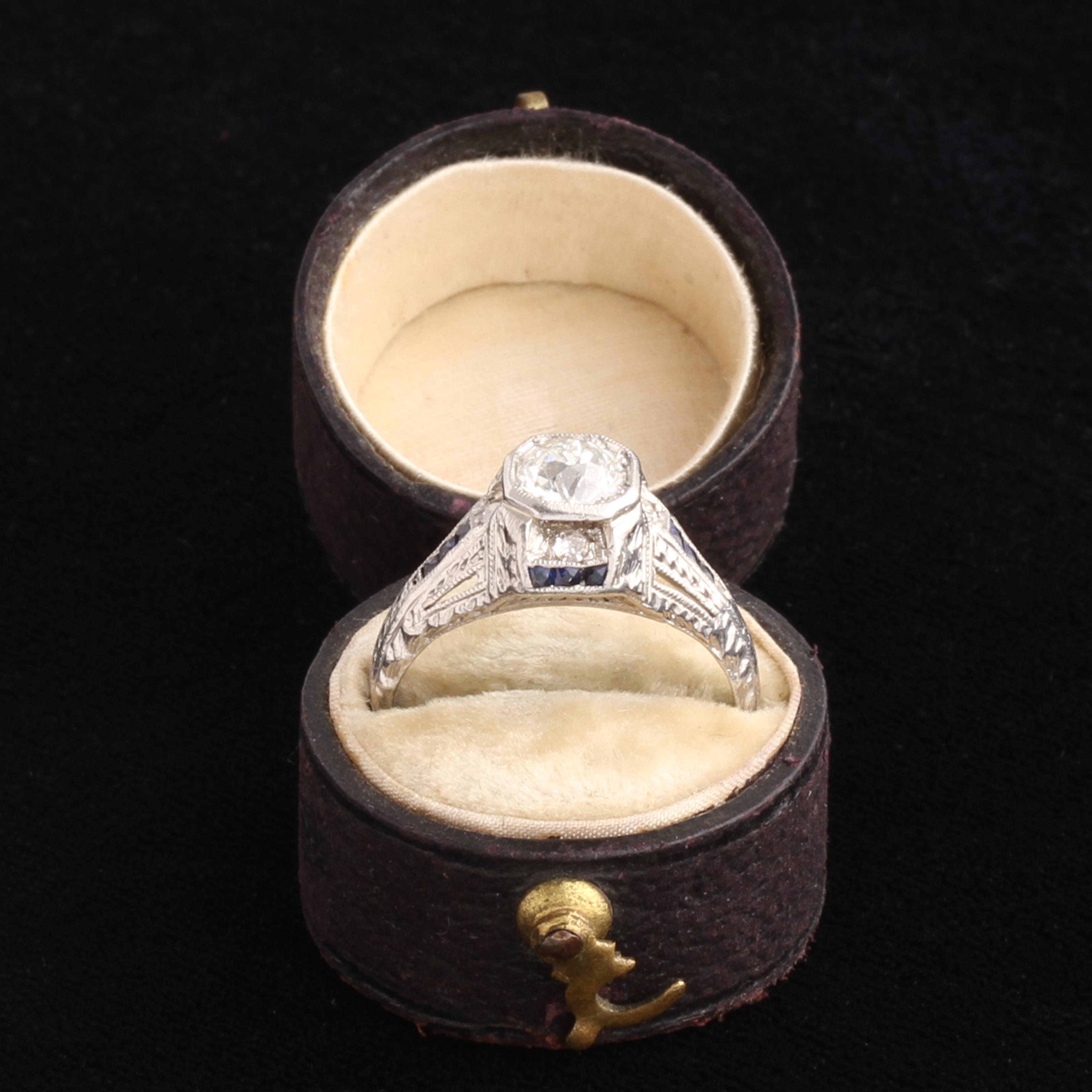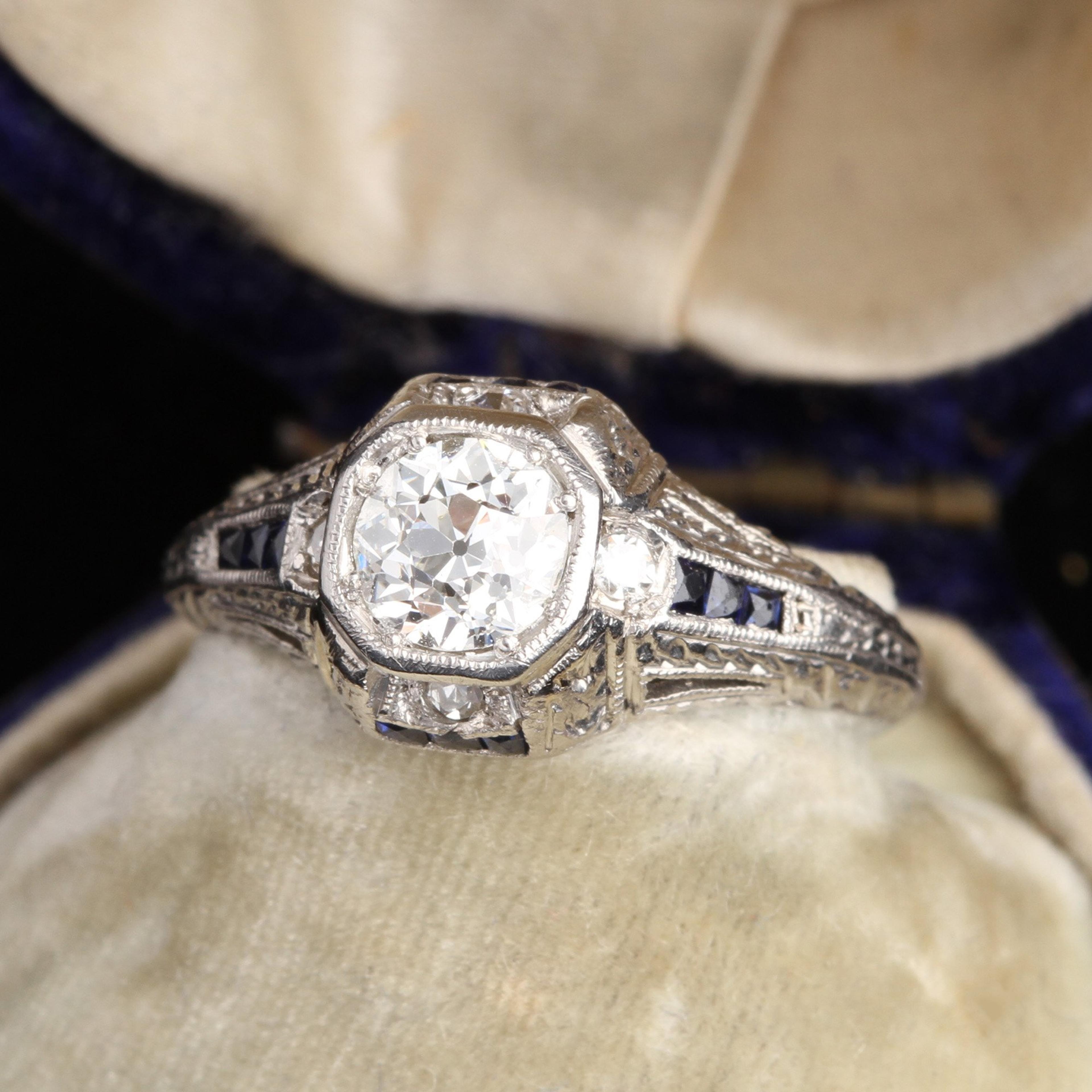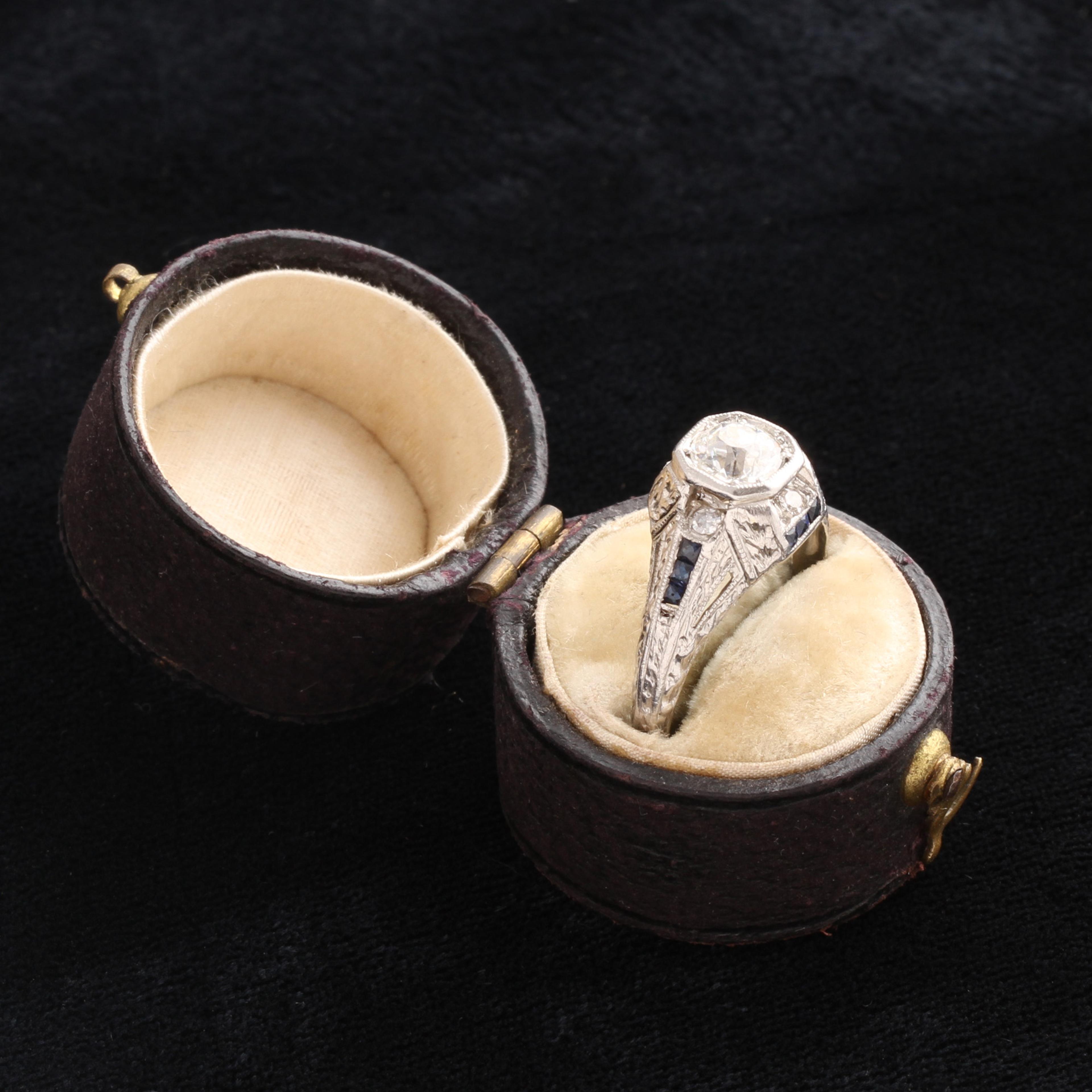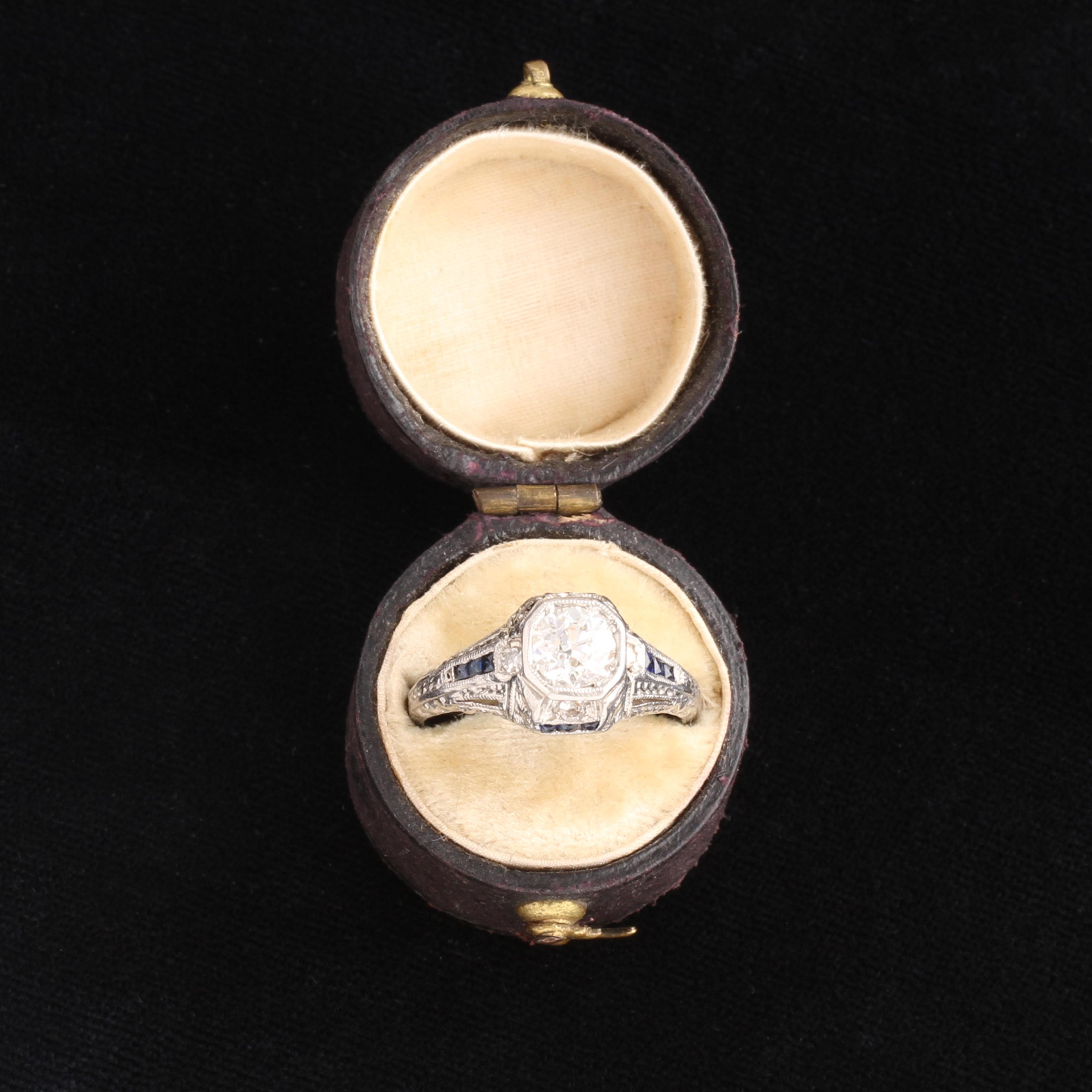This Art Deco ring is made in platinum with a bright .63ct old European cut diamond sparkling from within an octagonal frame. Single cut diamonds accent each cardinal point of the face and stripes of French cut synthetic sapphires lend an element of dynamism to the gallery and shoulders. Foliate engraving with milgrain accents put it over the top.
thedetails
- Materials
Platinum, .63ct old European cut diamond preliminary grading G/VS1, 4 single cut diamonds .10ctw, 12 French cut synthetic sapphires .25ctw
- Age
c. 1925
- Condition
Excellent
- Size
6.25, can be resized free of charge; 9.39mm head, 7.3mm rise off the finger, 1.9mm hoop
Need more photos?
Send us an email to request photos of this piece on a model.
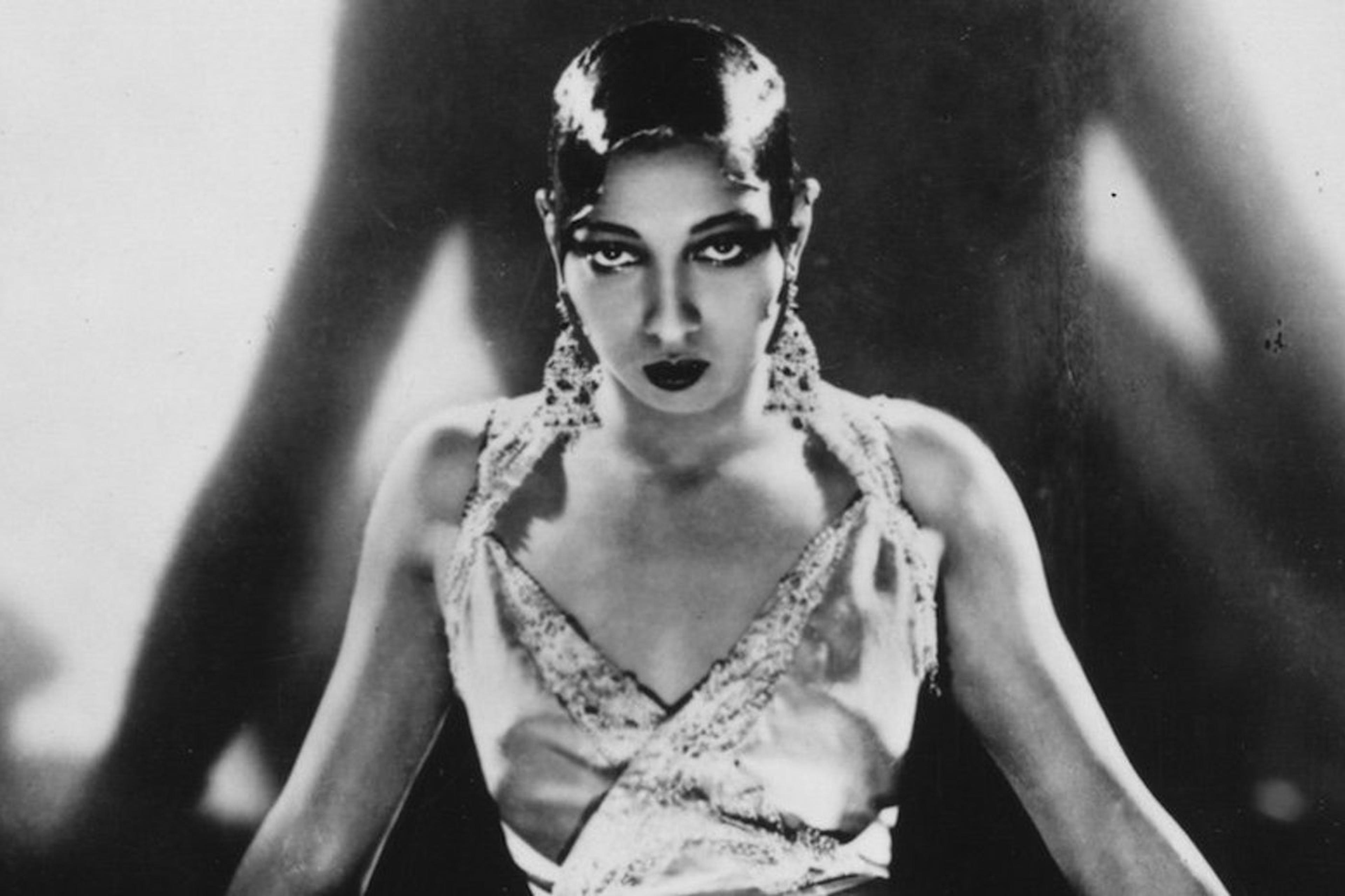
Aboutthe
Art DecoEra
1915 — 1940
Motifs like ziggurats and sunbursts, stripped of visual clutter, conveyed the optimism of an increasingly technological world. In jewelry, the predominant use of white metals let colorful gems take center stage. Stones that were opaque and true in color, like lapis lazuli, onyx, jade, coral, and opal were worked into designs alongside more precious and brilliant gems, like diamonds, sapphires, rubies, and emeralds. Extra-long beaded necklaces and tasseled “sautoirs” followed the narrow flapper silhouette. The baguette cut was an Art Deco innovation, and the decade saw increased use of other angular diamond cuts, like the precise calibré cut and the emerald cut. Synthetic colored gems, specifically ruby and sapphire, were celebrated as a scientific marvel. Marcel Tolkowsky, 21 years old at the time, published the design for the round brilliant cut in 1919.
